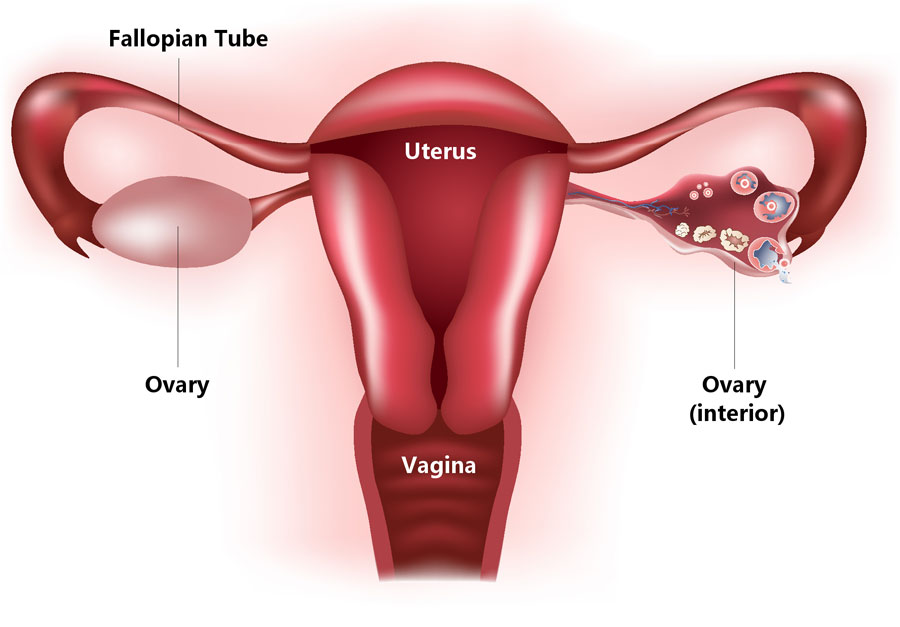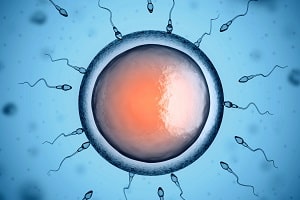Proudly part of the City Fertility Network
Proudly part of the City Fertility Network
For a couple to conceive a baby, both the male and female reproductive systems must be functioning properly. In the female this means:

The ovaries are two small, oval-shaped organs on either side of the uterus. All the eggs that a woman will produce throughout her adult life exist, in a very immature form, in the ovaries even as early as embryo stage.
About 4 million immature eggs are seen in an embryo during pregnancy. By the time that baby girl is born, this number has dropped to about 2 million and keeps falling until, at puberty, only about 300,000 remain.
As well as having the role of producing eggs, the ovary works as a gland producing and secreting hormones, namely estrogen and progesterone, which are necessary for normal reproductive development and fertility.
The fallopian tubes are narrow ducts that are attached to the upper part of the uterus and serve as tunnels for the fertilised oocytes (egg cells) to travel from the ovaries to the uterus after ovulation.
The uterus is a hollow, pear-shaped organ that is the home to a developing fetus. The uterus is divided into two parts: the cervix, which is the lower part that opens into the vagina; and the main body of the uterus, called the corpus. The corpus can easily expand to hold a developing baby. A channel through the cervix allows sperm to enter and menstrual blood to exit.
The vagina is a canal that joins the cervix (the lower part of the uterus) to the outside of the body. It is also known as the birth canal.

Fertilisation takes place when the genetic materials from the mother and the father combine to create an embryo. This is otherwise known as conception.
Conception normally occurs in the end of the fallopian tube away from the uterus (close to the ovary). The fertilised egg then moves to the uterus, where it implants into the lining of the uterine wall. This journey takes about five days.
At ovulation, the egg and the associated cells are ovulated from within an ovarian follicle and picked up by the fallopian tube. While females release only one egg, males release anywhere from 100 million to 300 million sperm in a single ejaculation, so once this happens it is a race for those sperm to find and penetrate the egg. Small movements within the fallopian tubes bring the sperm and egg together and it is here that the first sperm to reach the ovulated egg will fertilise it.
Within a few minutes of finding each other, the egg pulls the single sperm inside and this causes immediate changes in the egg membrane, stopping other sperm from entering.
The fertilisation of an egg by a sperm normally occurs in the fallopian tubes and is then referred to as an embryo. This is the initial stage of pregnancy and within 12 hours the first cell division has taken place. For the first three days after fertilisation, the embryo moves towards the uterus, growing all the time. By the fourth day the egg is ready for implantation.
It is necessary for the fertilised egg to be implanted into the uterine lining, where it can receive nourishment and oxygen. To be implanted, the fertilised egg must shed its shell and “burrow” into the lining of the uterus. At the end of the 40-week “gestation”, a baby is born.
If fertilisation and/or implantation does not take place, the egg starts to disintegrate and the corpus luteum in the ovary shrinks. Estrogen and progesterone levels drop and the lining of the uterus starts to produce prostaglandins. These chemicals cause changes in the blood supply to the uterus, breaking up the lining and stimulating it to contract. A period starts and the lining of the uterus is shed along with the unfertilised egg, and the menstrual cycle begins again.
Request an appointment with one of our specialists.Make your appointment